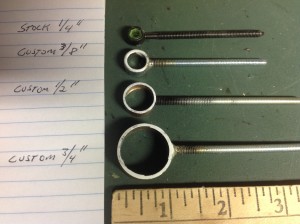One of the behaviors I see quite often on the shooting line is a furious adjusting of the sight. The first question an archer should ask of himself before adjusting the sight is, if he made a quality shot? Do you know what a quality shot is for you? Do you have the ability to repeat that quality shot? I hope all the answers are yes, because moving your sight without having answered affirmatively will lead to adjustments which may actually be detrimental to determining proper sight positioning.
In the above picture, the low eight was at the front end of the sequence. I knew I made a weak shot and left the sight alone. The result was the balance of the group in more or less the middle of the target. At 70m, it takes very little to move an arrow multiple rings. The point is, I knew I made a less than optimal shot and made the correct decision to leave the sight alone.
Last weekend I shot in the North Region FITA Field. An archer I shot with made his first shot on a target of an unknown distance and scored a 3. I thought for sure he would adjust his sight, assuming he had misjudged the distance. To my surprise he did nothing, raised his bow and drilled an X. We talked about it in the group for a while and the archer said he knew he had made a poor shot and was confident he had the correct yardage. His knowledge of his shot allowed him to recover quickly and not make a poor decision regarding sight adjustment.
This understanding of what your quality shot is, is extremely important when transitioning distances, or shooting FITA Field. Often times, this will be the difference between beating your competition, or getting edged out on the podium.


